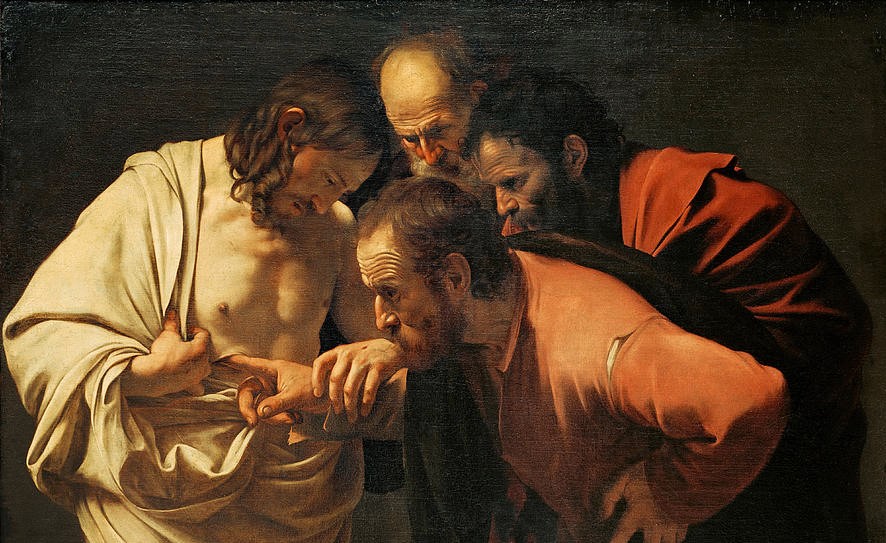By Sr. Constance Joanna, SSJD.
Hebrews 10.35 – 11.1 Psalm 126 John 20.24-29

There’s a great little book called Lent is Not Rocket Science, written by Bishop Nicholas Knisely, the Episcopal bishop of Rhode Island and a former professor of astronomy and physics. The book was wonderful in the literal sense of that word – causing wonder and amazement at the beauty and intricate design of God’s creation, and the way that science can help us to understand our faith better.
In the last chapters of the book, in which he focusses on the resurrection, Bishop Knisely poses the question that most contemporary westerners ask:
“what happened in the tomb during the night between Saturday and Easter dawn? No one knows. There’s very little we can say about the event scientifically. But something happened. No matter how you want to understand it, as a miracle beyond the ken of scientific knowledge or as a physical phenomenon that we as yet do not understand, clearly something happened. Any examination of the historical evidence leads us to admit that something happened.”
He goes on to say that unless something miraculous happened, something we can’t explain, there is no way to account for the radical change in the disciples. At the crucifixion they ran away terrified. Even on Easter night they cowered in fear of the authorities, hiding out in the upper room. But when Jesus came among them and said “Peace be with you,” they were completely, totally transformed. It was a life‑changing experience that moved them from the paralysis of fear to a fearless proclamation of the gospel to everyone, even though it cost them all martyrdom.
This throws some light on the experience of Thomas – whom we tend to call “doubting Thomas” as though that’s all we remember Thomas for, or as though doubt were a weakness or fault. But if you look at it from Bishop Knisely’s perspective, it was that appearance of Jesus in the upper room on Easter night that galvanized the disciples into action. If they had not seen Jesus in the flesh, that would never have. So who can blame him for wanting to have the same hands‑on experience and be assured himself that this truly was his Saviour? How else would he have the courage to risk his life – and lose it – for the sake of the gospel.
Thomas did see his Lord in the flesh when Jesus returned a week later. When he said “My Lord and my God!” Jesus said to him, “Have you believed because you have seen me? Blessed are those who have not seen and yet have come to believe.” We often take that comment of Jesus to be a judgment on Thomas – as though Jesus is saying, you, Thomas need physical proof because your faith is weak. But I think Jesus is saying something entirely different here. He came to the disciples so that his physical presence with them would empower them to spread the good news of his resurrection and God’s loving mercy. It was no judgment on the eleven, and it wasn’t on Thomas either. Rather he was saying, you have seen me in the flesh and now all those who believe in me in the future, who don’t have my physical body as proof, will have as proof and the fearless witness of the disciples.
Thomas represents so many of us ‑ probably all of us. We all long to see God face‑to‑face. Because most humans are not able to do that, it is so important that we have the gospel accounts of the resurrection encounters with Jesus. And it’s equally important that we pay attention to those quiet moments in our own lives when we may not see God face‑to‑face but when we are touched lightly by the presence of God, perhaps when among family and friends, or when we are walking alone on a beautiful beach or quiet wood, or saying our prayers, or when we stop to help someone who needs our help. There are examples of the appearance of Jesus everywhere. Watch for them today.
Image: The Incredulity of Saint Thomas by Michelangelo Merisi da Caravaggio, c. 1601–1602. https://images.fineartamerica.com/images/artworkimages/mediumlarge/2/doubting-thomas-carvaggio.jpg


